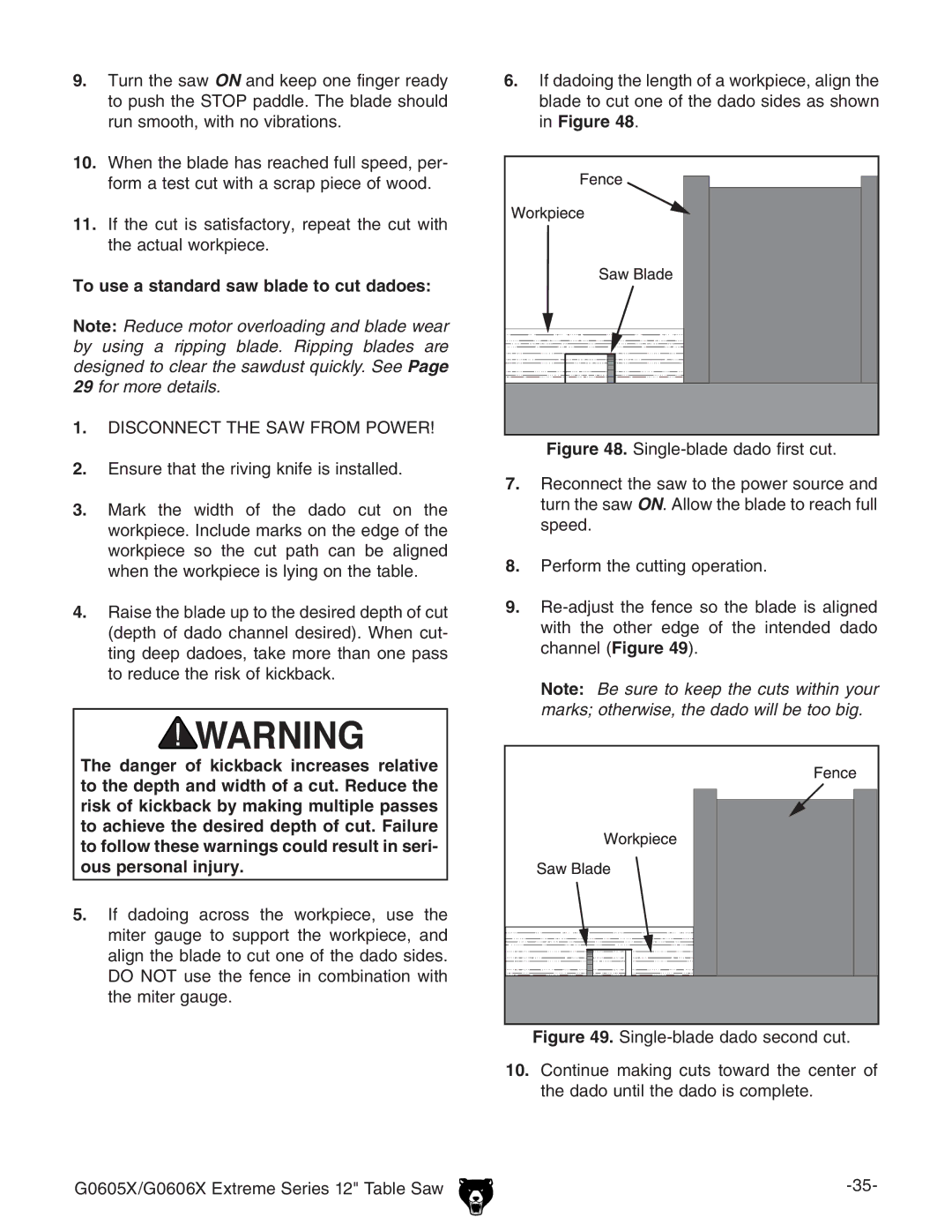
9. | Turn the saw ON and keep one finger ready | 6. |
| to push the STOP paddle. The blade should |
|
| run smooth, with no vibrations. |
|
10. | When the blade has reached full speed, per- |
|
| ||
| form a test cut with a scrap piece of wood. |
|
11. | If the cut is satisfactory, repeat the cut with |
|
| the actual workpiece. |
|
To use a standard saw blade to cut dadoes:
Note: Reduce motor overloading and blade wear by using a ripping blade. Ripping blades are designed to clear the sawdust quickly. See Page 29 for more details.
1. DISCONNECT THE SAW FROM POWER!
2.Ensure that the riving knife is installed.
3.Mark the width of the dado cut on the workpiece. Include marks on the edge of the workpiece so the cut path can be aligned when the workpiece is lying on the table.
4.Raise the blade up to the desired depth of cut (depth of dado channel desired). When cut- ting deep dadoes, take more than one pass to reduce the risk of kickback.
The danger of kickback increases relative to the depth and width of a cut. Reduce the risk of kickback by making multiple passes to achieve the desired depth of cut. Failure to follow these warnings could result in seri- ous personal injury.
5.If dadoing across the workpiece, use the
miter gauge to support the workpiece, and align the blade to cut one of the dado sides. DO NOT use the fence in combination with the miter gauge.
G0605X/G0606X Extreme Series 12" Table Saw
